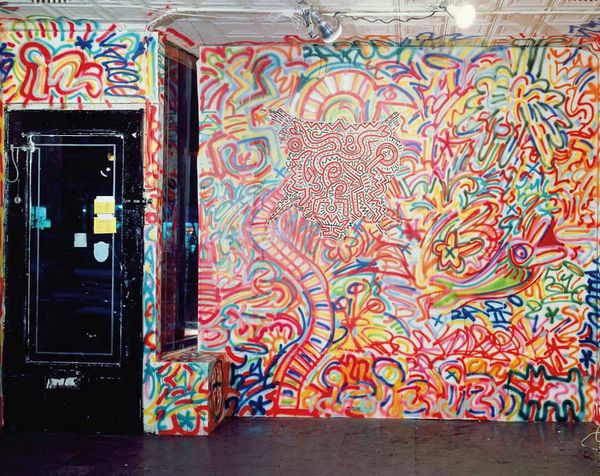Keith Haring Untitled, 1983 (detail)
Two pieces in our upcoming 20th Century & Contemporary Art Day Sale exemplify Keith Haring's genius and dexterity as an artist. The early 1980s are the most sought-after years of Keith Haring's tragically short and intense career. Starting at an early age when his father made him sketches of characters from comic strips through his graffiti days in the New York subway, Haring invented his own alphabet of contemporary artistic language.
Under the influence of Andy Warhol and contemporary to Jean-Michel Basquiat, Haring believed that art was a product of the individual and the ultimate expression of individuality. He chose the public realm for his art out of curiosity and an embrace of his temperament as well as his generosity. Enjoying success at a very young age, his philosophy was an idea of universal art strongly influenced by the aesthetics of decoration and eighties post-modernism.
The early 1980s were a heady time in New York, and particularly within the specific artistic milieu with which Haring ran. By 1983, Haring had his first exhibition, his "coming out" of sorts within the New York art world, at Tony Shafrazi Gallery the year prior, and his exhibition in February of 1983 at Fun Gallery would firmly establish his place among the pantheon of the scene. Wrote Timothy Greenfield-Sanders in "An Afternoon with Keith" from 2005, "Fun Gallery was the epicenter of this new scene. Opening nights spilled into the streets, as the graffiti kids tried to figure out how their art could move from the walls of the city to the walls of the gallery. From the beginning, Keith Haring was one to watch. He was respected below ground and up above." Completely covering the walls, the two installed an exhibition of a variety of material and objects.
These two particular works, executed on calf hides, were installed – one directly on the wall, and the other on the door to Fun Gallery's office. Employing his trademark style and graphic line, Haring adorned and imbued these hides with his frenetic energy and iconography. Taking his almost tribal line directly to this very ancient support of hide, Haring brought the ancient, the mythic and the Dionysian into the mania of 1980s New York.
The graffiti kids [of the 1980s] tried to figure out how their art could move from the walls of the city to the walls of the gallery.
Keith Haring Untitled, 1983
Haring's art has always been so powerful because it has an ability to embody so many meanings and to be relevant for so many people. Grounded in art historical tradition from Legér and Dubuffet to Egyptian and aboriginal hieroglyphs and petroglyphs, Haring's art also encapsulated the immediacy and directness of the man himself and the times in which he came of age.
Keith Haring Untitled, 1983
One need not have any artistic schooling to realize that Haring exemplified that singularly unifying trait of all artists, to share something with the rest of humanity.
Melding high and low, destroying barriers between public and private, the elite strata of the art world and the grittiness of his East Village locale, Haring and works such as these two Untitled paintings serve now as particular talismans from an age gone by, but forever relevant.



